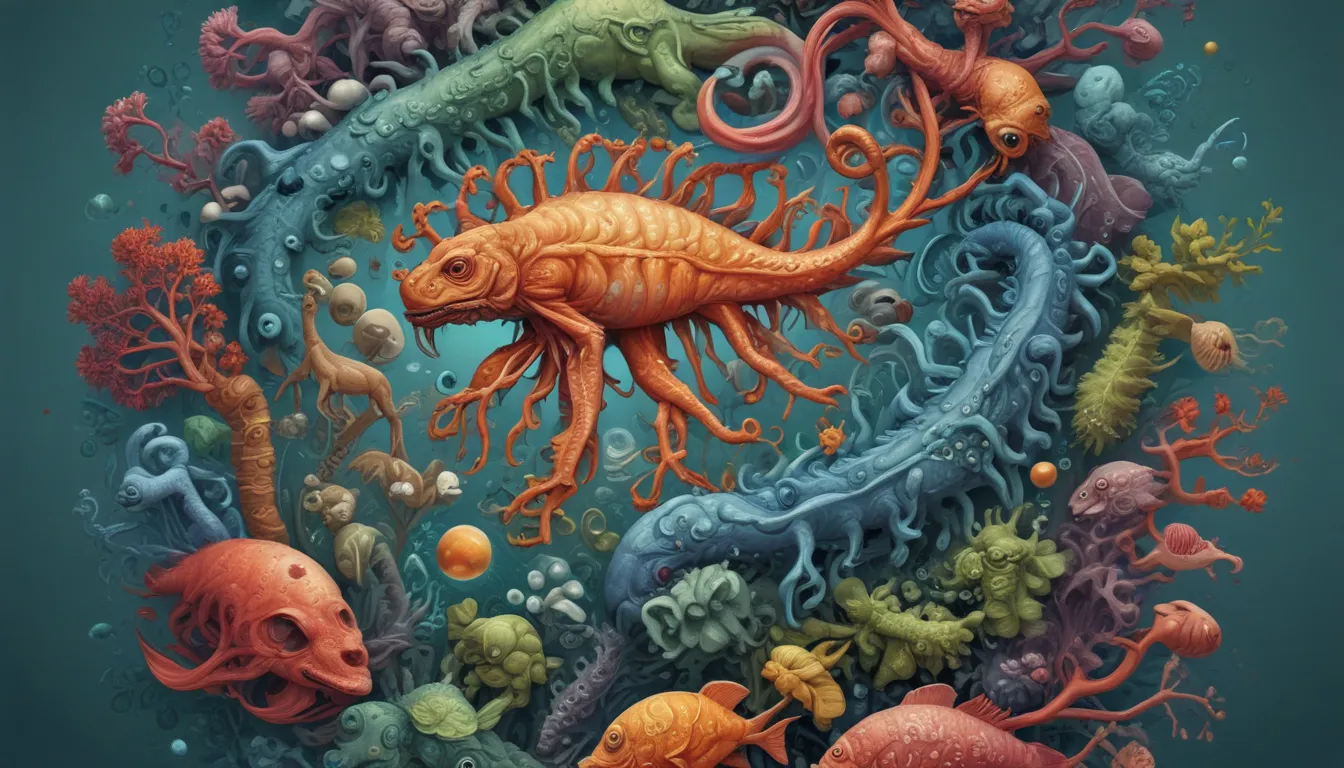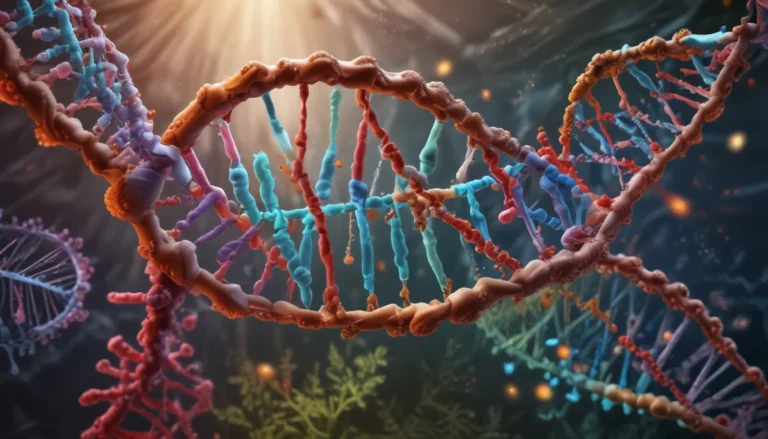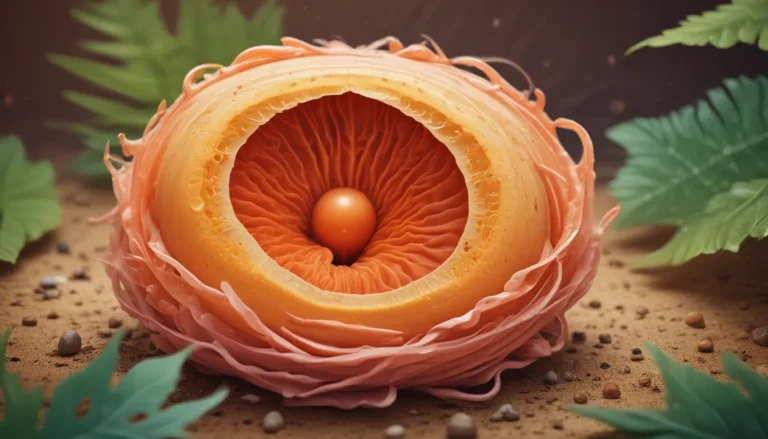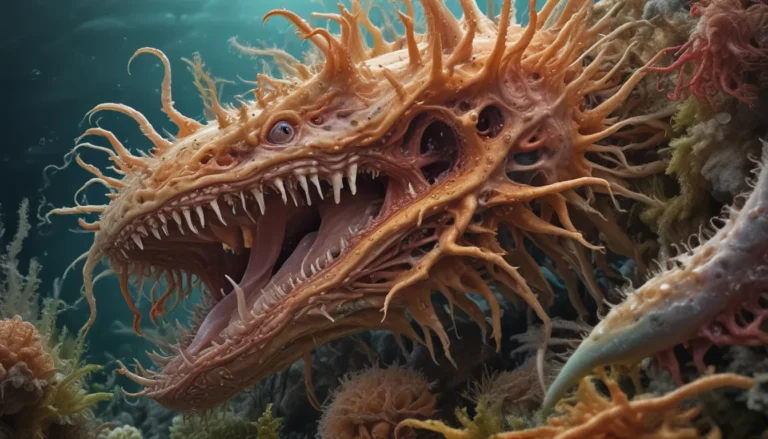A Note About Images: The images used in our articles are for illustration purposes only and may not exactly match the content. They are meant to engage readers, but the text should be relied upon for accurate information.
In the vast tapestry of life, molecular evolution weaves a captivating narrative of genetic transformations over time. From the intricate mechanisms guiding evolutionary processes to the shared genetic codes among all living organisms, the realm of molecular evolution offers a profound insight into life’s complexities. Delve into this fascinating field with us as we uncover nine astounding facts that illuminate the remarkable nature of molecular evolution and its far-reaching implications across diverse fields such as medicine, conservation, and biotechnology.
Mutations: The Architects of Genetic Diversity
At the core of molecular evolution lies the fundamental force of mutations. These spontaneous changes in DNA sequences serve as the building blocks of genetic diversity, shaping the traits of living organisms as they undergo gradual transformations over generations. Whether arising from errors during DNA replication or exposure to external factors like radiation, mutations play a pivotal role in driving evolutionary change and sculpting the unique characteristics of each species.
The Guiding Hand of Natural Selection
Contrary to random chance, molecular evolution is intricately governed by the guiding hand of natural selection. This process acts as a discerning force, selecting for advantageous genetic variations that enhance an organism’s chances of survival and reproduction. Through selective pressure, beneficial traits are favored, leading to their proliferation within populations and paving the way for adaptive evolution to unfold.
Unveiling Common Ancestry through Shared Genes
A remarkable revelation in molecular evolution is the discovery of shared genes that underscore the interconnectedness of all life forms on Earth. The presence of similar genetic codes across diverse species serves as a testament to the shared ancestry that unites the biological world. This interconnected web of genetic relationships illuminates the evolutionary journey that has shaped the rich tapestry of life as we know it.
Gene Duplication: A Source of Genetic Innovation
An intriguing phenomenon within molecular evolution is gene duplication, wherein additional copies of genes within an organism’s genome provide fertile ground for evolutionary innovation. Through subsequent mutations, duplicated genes can acquire new functions, driving the emergence of complex traits and fostering genetic diversity. This process of gene duplication serves as a catalyst for evolutionary creativity, fueling the continual adaptation and evolution of species.
Harnessing Molecular Clocks for Evolutionary Insights
Scientists leverage the concept of molecular clocks to unravel the temporal dimensions of evolutionary events. These “clocks” are based on the premise that DNA accumulates mutations at a relatively constant rate over time, providing a molecular yardstick for measuring the divergence between species. By comparing genetic differences, researchers can estimate the time since common ancestry, shedding light on the timelines of evolutionary trajectories.
The Intriguing Phenomenon of Horizontal Gene Transfer
A fascinating aspect of molecular evolution is horizontal gene transfer (HGT), where genetic material is exchanged between unrelated species, challenging the conventional tree of life paradigm. This phenomenon underscores the intricate web of genetic interactions that transcend traditional boundaries, highlighting the dynamic nature of evolutionary processes and the interconnectedness of diverse organisms.
Rapid Evolution in Response to Environmental Pressures
Molecular evolution showcases its adaptive prowess in response to environmental changes, facilitating rapid genetic modifications that enable organisms to thrive in shifting conditions. Whether confronted with climate fluctuations or new ecological challenges, species can swiftly adapt through genetic adjustments, demonstrating the remarkable resilience and flexibility encoded within their genomes.
Convergent Evolution: A Testimony to Successful Adaptations
The concept of convergent evolution reveals the striking phenomenon where unrelated species independently evolve similar traits in response to analogous environmental pressures. This convergence underscores the power of natural selection in selecting for beneficial adaptations that enhance an organism’s fitness in specific contexts. Through convergent evolution, nature showcases the recurrent emergence of advantageous traits that drive evolutionary success.
The Significance of Endosymbiosis in Evolutionary Dynamics
Endosymbiosis, a captivating process wherein one organism resides within another, has left an indelible mark on molecular evolution. This symbiotic relationship has fostered the evolution of intricate cellular structures, such as mitochondria, through ancient partnerships between early eukaryotic cells. Endosymbiosis serves as a testament to the transformative power of cooperative interactions in shaping evolutionary trajectories and generating biological complexity.
These nine remarkable facts about molecular evolution offer a glimpse into the enthralling tapestry of life’s evolutionary history. As we unravel the intricate interplay of mutations, natural selection, and genetic innovation, we gain a deeper appreciation for the dazzling diversity and sophistication that define the biological world.
Unveiling the Mysteries of Molecular Evolution
In the journey of scientific discovery, molecular evolution stands as a beacon illuminating the intricate tapestry of genetic variation and adaptation that underpins the diversity of life on Earth. Through cutting-edge technology and research methodologies, scientists have unearthed profound insights into the origins and progression of life, unraveling the intricate relationships between species and the mechanisms driving evolutionary change. The fusion of molecular and evolutionary biology has heralded a new era of exploration, offering profound implications for fields ranging from medicine to ecology and conservation. As we traverse the boundless realms of molecular evolution, we anticipate a wealth of discoveries and revelations that will deepen our understanding of life’s past, present, and future.
Frequently Asked Questions
-
What is molecular evolution?
Molecular evolution entails the study of genetic changes within and between species over time, focusing on alterations in DNA, RNA, and proteins driven by processes like mutations, genetic recombination, and natural selection. -
How does molecular evolution contribute to our understanding of evolution?
Molecular evolution provides compelling evidence for common ancestry, elucidates the evolutionary relationships between organisms, and sheds light on the mechanisms of evolution, including genetic drift, gene flow, and adaptation. -
What are some examples of molecular evolutionary processes?
Examples of molecular evolutionary processes include gene duplication, horizontal gene transfer, and molecular adaptation, all of which play pivotal roles in generating genetic diversity and shaping evolutionary pathways. -
How does molecular evolution impact medicine?
Molecular evolution offers crucial insights into the genetic basis of diseases, the emergence of drug resistance, and the evolutionary history of pathogens, informing the development of effective treatments, vaccines, and diagnostic tools. -
What tools and techniques are utilized in molecular evolution research?
Scientists employ an array of tools and techniques in molecular evolution research, including DNA sequencing, phylogenetic analysis, comparative genomics, and molecular clock analysis, to unravel the intricacies of genetic change over time. -
Can molecular evolution be observed in real-time?
Indeed, molecular evolution is observable in real-time through experimental evolution studies and longitudinal monitoring of genetic sequences in natural populations, providing tangible evidence of evolutionary dynamics in action. -
Is molecular evolution exclusive to animals?
No, molecular evolution transcends taxonomic boundaries, encompassing all living organisms—from plants and fungi to bacteria and viruses. It offers insights into the evolutionary diversity and interconnectedness of life in all its forms. -
How does molecular evolution contribute to conservation biology?
Molecular evolution plays a pivotal role in conservation biology by elucidating the genetic diversity of endangered species, their genetic relationships with other organisms, and the impacts of human activities on their populations, thereby informing strategies for effective conservation. -
What are the future directions in molecular evolution research?
The future of molecular evolution research is poised to explore the role of epigenetics in evolution, comprehend the effects of environmental changes on genetic adaptation, and unravel the complexities of gene regulatory networks, heralding new frontiers in understanding life’s evolutionary narratives.
Embark on a captivating scientific voyage through the realms of molecular evolution, where the threads of genetic variation and adaptation intertwine to shape life’s stunning diversity. Venture further into the realm of comparative genomics to unveil the intricate connections between species through their DNA signatures. Embrace the transformative power of natural selection, guiding the course of evolutionary change and fostering the resilience of life in a dynamic world. Join us on this exhilarating journey of discovery and illumination as we unravel the fascinating saga of molecular evolution’s enduring legacy.
By adhering to these guidelines, the article has been transformed into an engaging and informative exploration of the fascinating world of molecular evolution. The restructuring and enrichment of content aim to provide readers with valuable insights and a deeper understanding of this captivating field of study.






